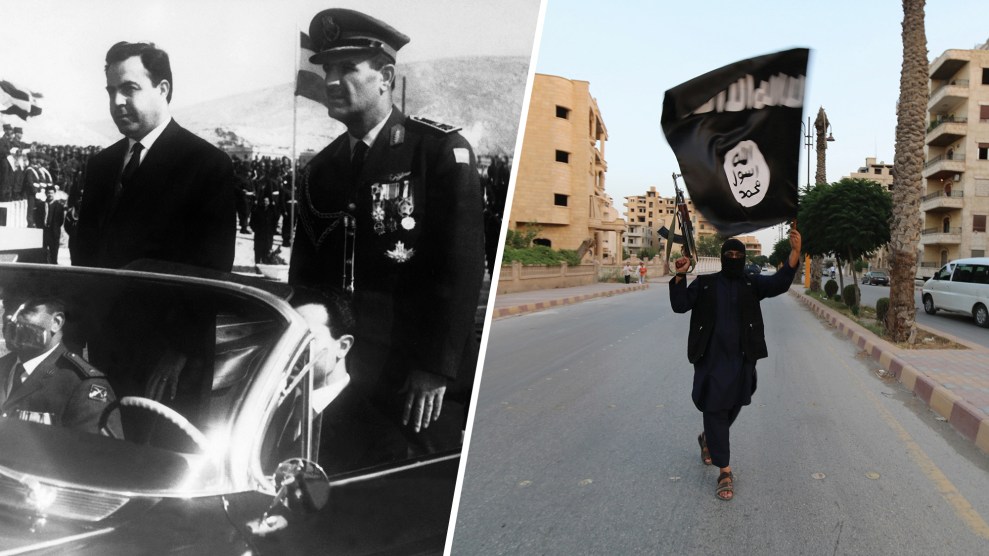
Left: Syrian President Hafez al-Assad (right) in 1967. Right: An ISIS fighter in Raqqa, Syria, in 2014Keystone-France/Gamma-Rapho/Getty; Stringer/Reuters
1970
Hafez al-Assad seizes power in a coup within the Baath Party. He becomes president of Syria the following year.
1980
Syria and the Soviet Union sign a treaty of friendship and cooperation.
1982
In response to a Sunni rebellion in Hama, Assad’s military destroys the city and kills at least 20,000 people.
2000
Assad dies. He is succeeded by his son Bashar, who many Syrians hope will be a reformer.
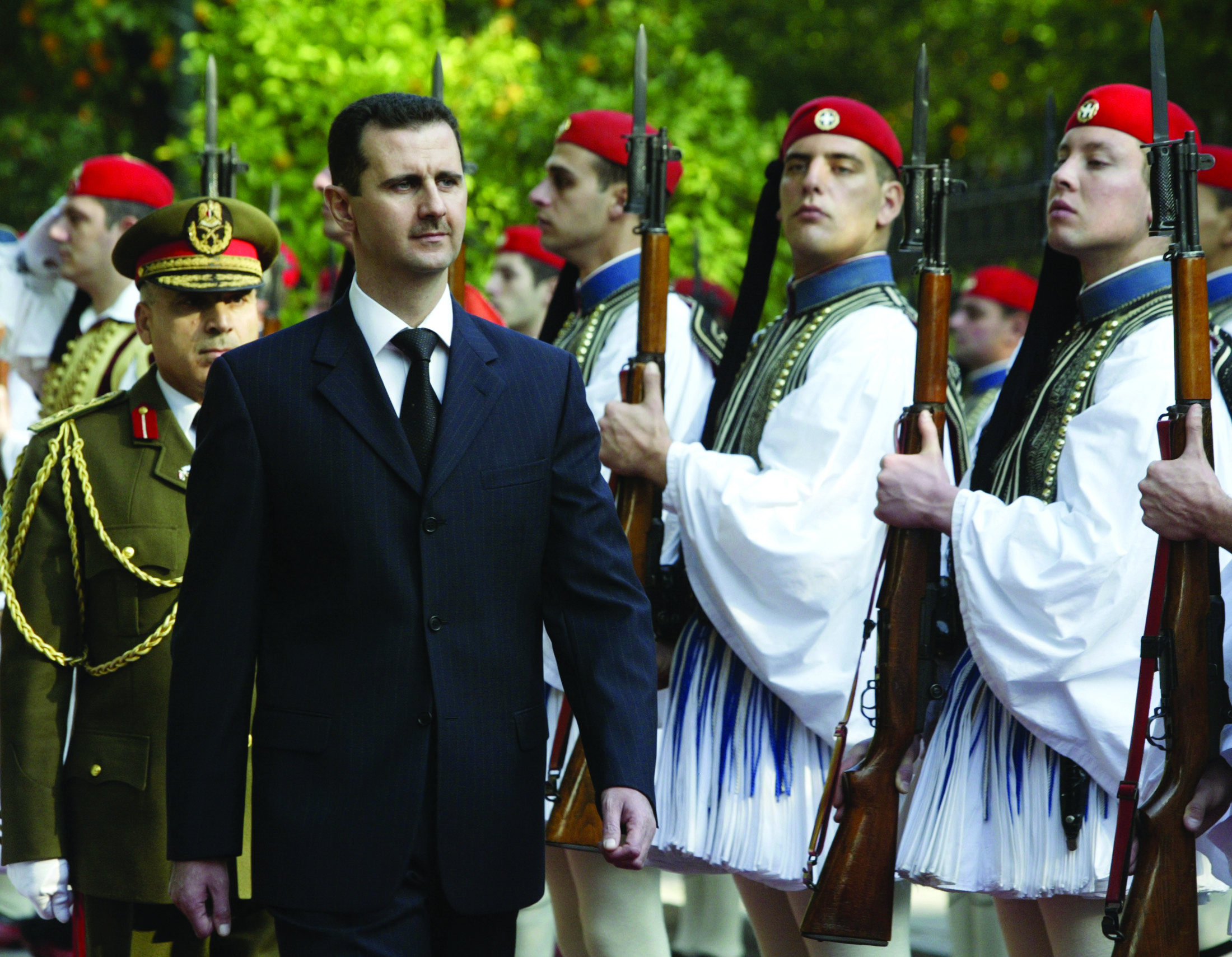
2002
Undersecretary of State John Bolton includes Syria in a list of countries “beyond the axis of evil” that are seeking weapons of mass destruction.
2004
President George W. Bush imposes sanctions on Syria, asserting that it has ties to terrorism.
2005
Tensions between the United States and Syria escalate after former Lebanese Prime Minister Rafik Hariri is assassinated by a truck bomb, allegedly with help from Assad’s regime.
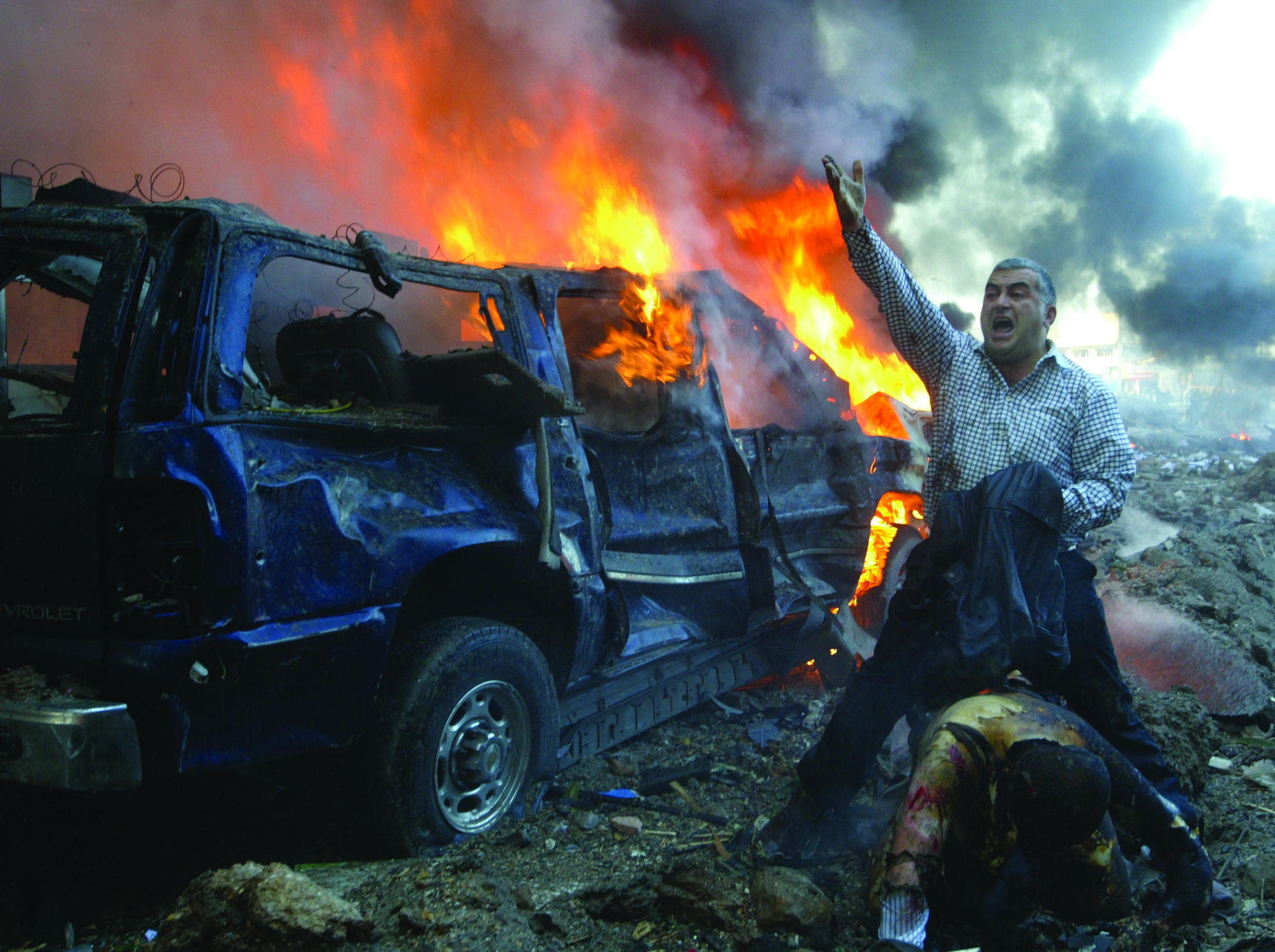
2010
The United States renews sanctions against Syria, saying that it seeks weapons of mass destruction.
March 2011
Protests begin in Daraa after police torture teenagers who had painted anti-regime graffiti. As mass demonstrations spread, the Assad regime cracks down violently.
July 2011
Military defectors create the Free Syrian Army, Syria’s first armed opposition group.
July 2011
Assad sends troops into Hama and Deir Ezzor, killing hundreds of civilians.
August 2011
President Barack Obama calls for Assad to step down.
December 2011
Al Qaeda’s new Syrian affiliate, the Nusra Front, stages a suicide bombing in Damascus.
May 2012
The United States begins sending “nonlethal” aid to Syrian rebels.
June 2012
The United States, Russia, Turkey, Iraq, and other countries meet in Geneva to discuss a transition to a “democratic and pluralistic” Syria.
August 2012
Obama warns Assad that using chemical weapons would cross a “red line,” triggering US military intervention.
April 2013
The Islamic State of Iraq and Syria (ISIS) forms.
May 2013
Hezbollah forces launch an offensive “to aid the Assad regime.”
July 2013
Congressional intelligence committees approve CIA arms shipments to the Syrian opposition.
August 2013
The Syrian government uses sarin in an attack on Ghouta, killing more than 1,400 people. The following month, Congress rejects Obama’s request to approve a military response.
September 2013
The Syrian government agrees to hand over its chemical weapons stocks for destruction.
November 2013
Kurdish parties establish the autonomous region of Rojava in northern Syria.
June 2014
ISIS declares the creation of a caliphate across its territory in Syria and Iraq.
September 2014
Congress authorizes the Pentagon to train and arm Syrian rebels. In what will become known as Operation Inherent Resolve, the United States and its coalition partners begin airstrikes against ISIS.
September 2015
As the number of refugees tops 4 million, a photograph of a drowned Syrian toddler provokes international concern over the humanitarian crisis. After reaffirming its treaty with Syria, Russia officially joins the war, carrying out airstrikes and providing military aid to Assad.
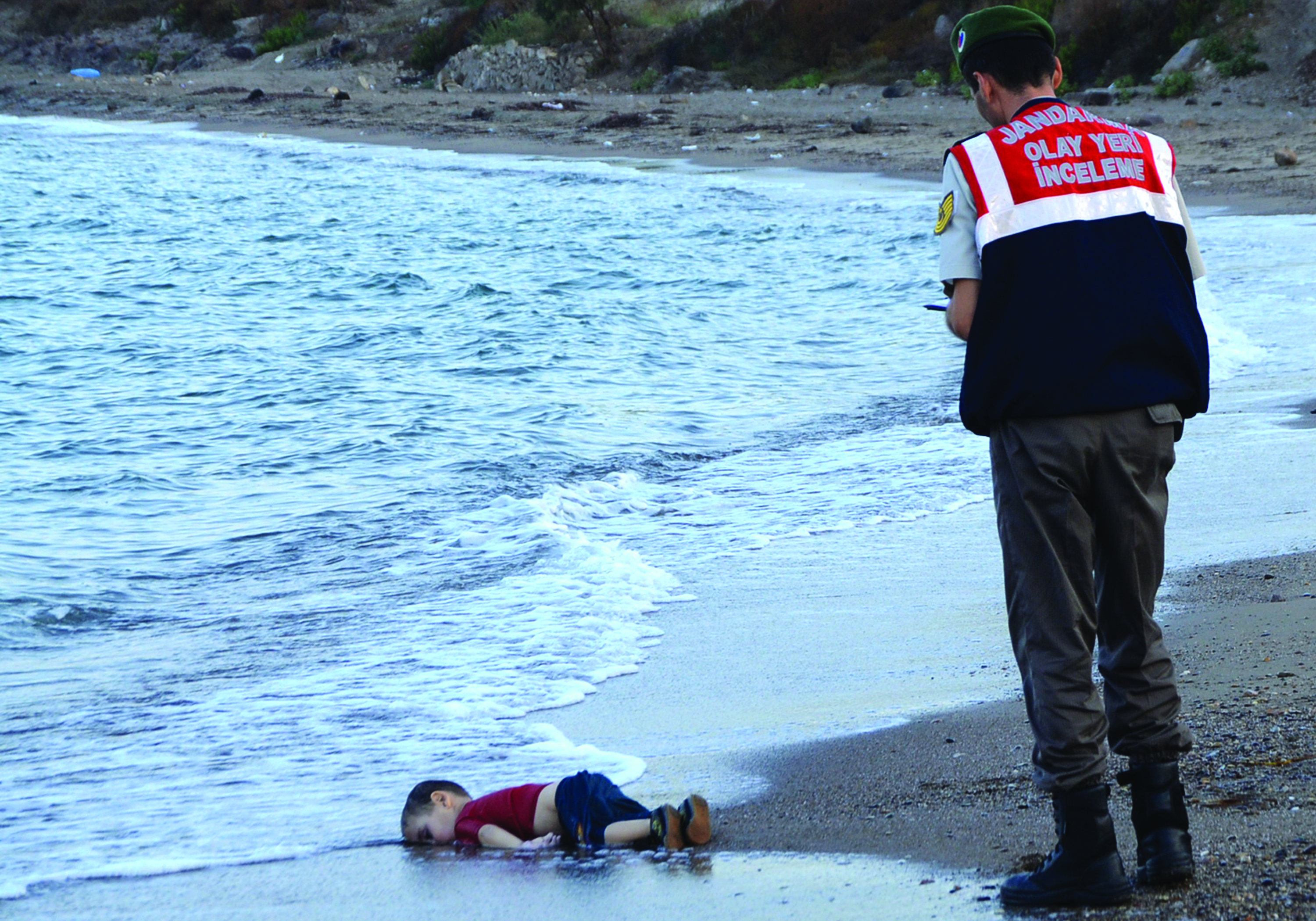
December 2015
As the Obama administration’s focus in Syria shifts toward ISIS, the Pentagon says special operations troops will be deployed “to fight in Syria and Iraq.”
December 2016
Supported by Russian planes, the Syrian government retakes Aleppo, a major rebel stronghold.
January 2017
President Donald Trump blocks Syrian refugees from entering the United States. (Fewer than 3,100 have been admitted since he took office.)
March 2017
UN Ambassador Nikki Haley says the Trump administration’s “priority is no longer to sit there and focus on getting Assad out.”
April 2017
Following another chemical attack by the Syrian government, Trump announces a missile strike.
May 2017
Over Turkey’s objections, Trump approves a plan to arm Kurdish forces in Syria.
July 2017
Trump ends the CIA program to support anti-Assad rebels.
October 2017
After months of heavy coalition bombing and ground assaults by the US-backed Syrian Democratic Forces, ISIS is driven out of Raqqa, losing its self-proclaimed capital.
February 2018
Pro-Syrian government forces, including Russian mercenaries, attack the US-held Conoco gas plant outside Deir Ezzor city. The Geneva peace process that opened in 2012 ends.
March 2018
Turkey and the FSA seize Afrin, a Kurdish region in northwest Syria.
April 2018
After a chemical attack in Douma, the United States, Britain, and France launch airstrikes against Syrian government targets.
July 2018
Assad’s army recaptures part of southern Syria from rebel forces.
October 2018
US military officials report that an SDF offensive has isolated the “last pocket of ISIS resistance” in eastern Syria.
December 2018
Trump announces the withdrawal of all US troops from Syria. Defense Secretary James Mattis resigns in protest.
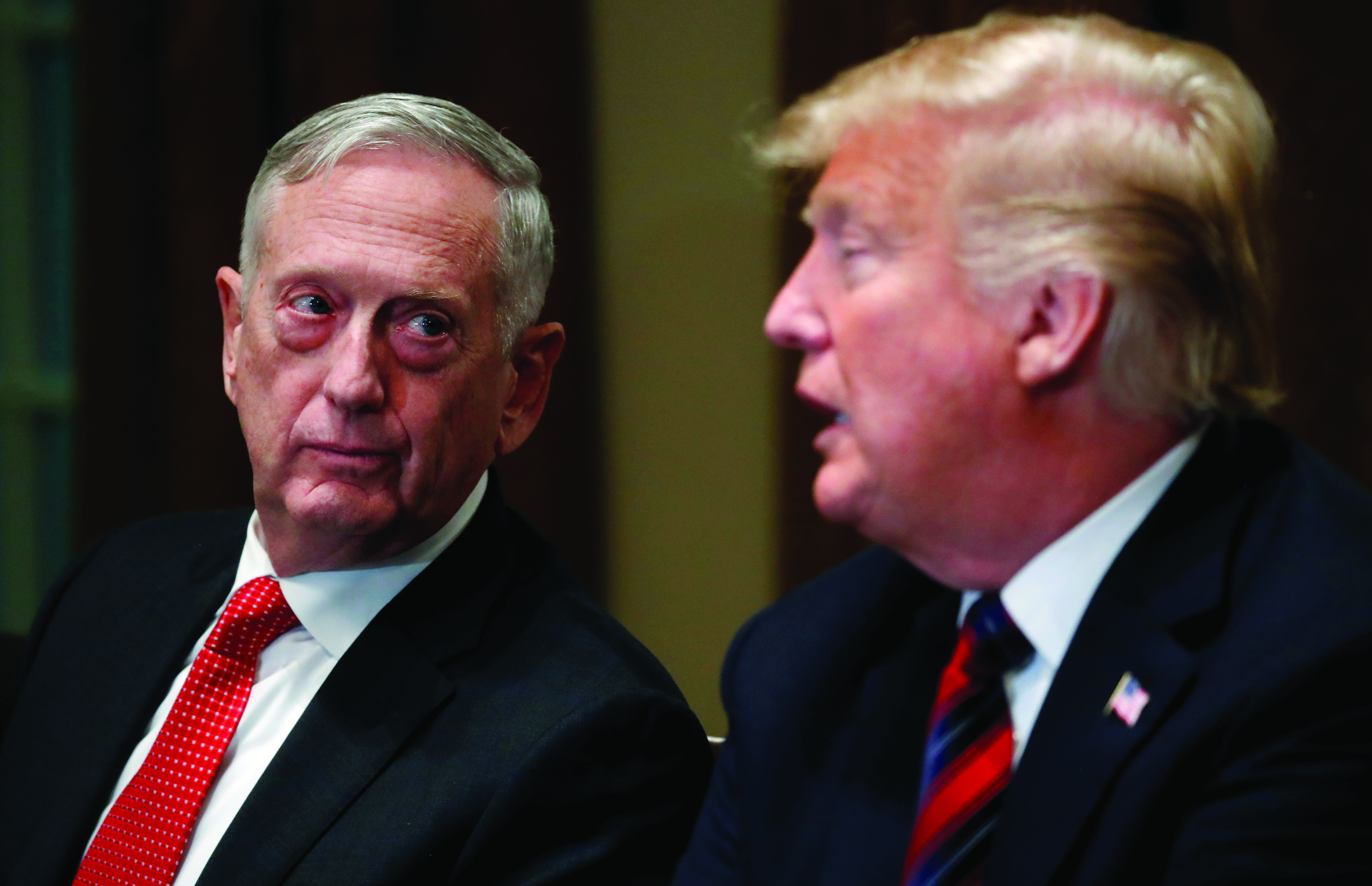
February 2019
ISIS’s remaining fighters are trapped in shrinking enclaves. Trump says he should receive a Nobel Peace Prize for his efforts in Syria. “I stopped the slaughter of perhaps 3 million people,” he says. When members of Congress request that some troops stay in Syria, Trump writes back, “I agree 100%.”
October 2019
The White House says it will allow Turkish forces to invade northern Syria. Facing criticism for this unexpected move, Trump tweets “if Turkey does anything that I, in my great and unmatched wisdom, consider to be off limits, I will totally destroy and obliterate the Economy of Turkey.”
Listen to “Behind the Lines,” a Mother Jones Podcast series. Shane Bauer reports from Syria on America’s role in one of the 21st century’s bloodiest conflicts. Episode One takes you to the former ISIS stronghold of Raqqa, where forensic teams conduct the harrowing work of uncovering thousands of bodies from the rubble.















